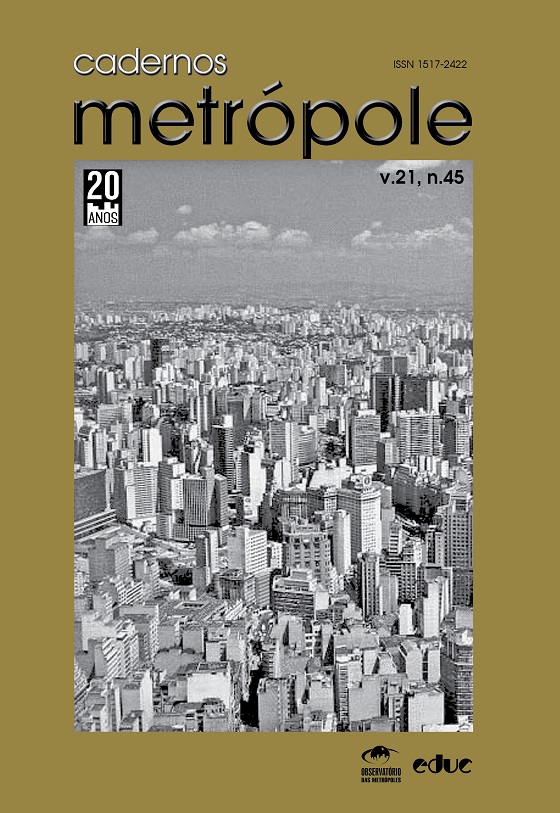Spatial proximity versus social distance: examining the articulations between socially distant groups in three shantytowns of Salvador, Brazil
Keywords:
Neighborhood effects, residential segregation, social segmentation, urban poverty, territorial stigmatizationAbstract
In this article, we aim to investigate whether the embeddedness of the shantytowns Calabar, Vale das Pedrinhas and Bate Facho (city of Salvador, State of Bahia) in a middle- and upper-class region fosters their populations’ socioeconomic integration. Assessing neighborhood effects on the material, social and symbolic dimensions based on semi-structured interviews, we highlight four factors that characterize these urban configurations: employment opportunities arising from the gated community dwellers’ demand for personal services; segmented access to urban services; social avoidance, except for employment relationships; and territorial stigmatization. We conclude that the variability found among the places regarding the individual’s socioeconomic integration is related to the public spaces’ capacity for enabling commercial exchanges and to the impact of criminality on the neighborhoods’ social organization.Downloads
Published
2019-06-08
How to Cite
Treuke, S. (2019). Spatial proximity versus social distance: examining the articulations between socially distant groups in three shantytowns of Salvador, Brazil. Cadernos Metrópole, 21(45), 619–646. Retrieved from https://revistas.pucsp.br/index.php/metropole/article/view/2236-9996.2019-4512
Issue
Section
Artigos
License
A revista não tem condições de pagar direitos autorais nem de distribuir separatas.
O Instrumento Particular de Autorização e Cessão de Direitos Autorais, datado e assinado pelo(s) autor(es), deve ser transferido no passo 4 da submissão (Transferência de Documentos Suplementares). Em caso de dúvida consulte o Manual de Submissão pelo Autor.
O conteúdo do texto é de responsabilidade do(s) autor(es).


